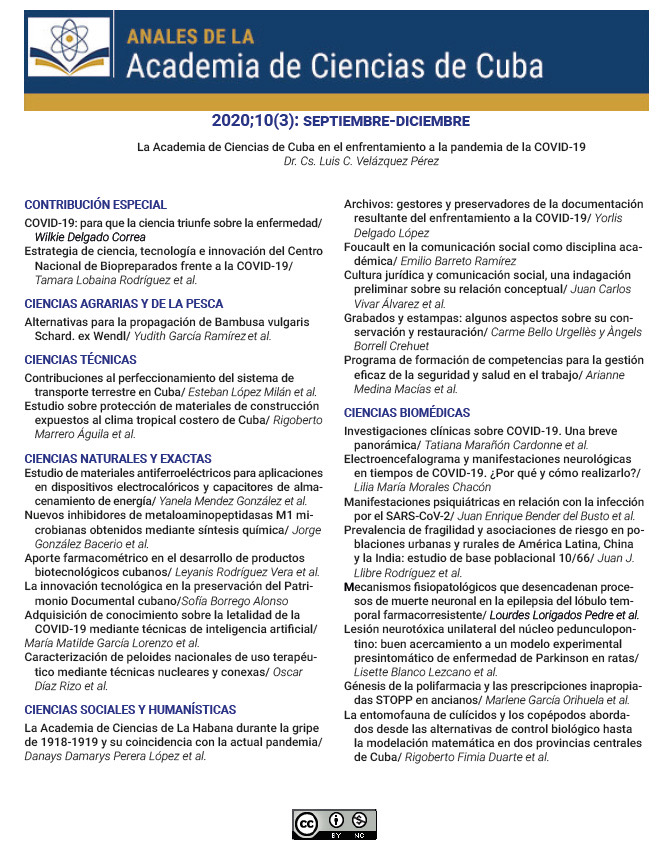The entomofauna of culicids and copepods discussed from the perspective of biological control alternatives up to the mathematical modeling in two central provinces of Cuba
Keywords:
Copepods, culicids, Mesocyclops aspericornis, mathematical modelingAbstract
Introduction. Throughout history, mankind has suffered from the scourge of potentially fatal viral and parasitic diseases. Objective: To assess the bioregulatory potential of larval fishes and copepods on larval populations of culicids of veterinary medical importance, as well as the contribution of mathematical modeling in the provinces of Villa Clara and Sancti Spíritus, from the year 2000-2019.Methods. The main river reservoirs existing in both provinces were sampled, both for fish (jamo: 75 x 50 x 50 cm and 150 cm of mango); copepods (strainer: 14 x 15 x 13 cm, with mesh size, 200 μm). A comparison was made between the chemical treatment based on Temepho 2% and the biological/fluvial fish, which made it possible to do an economic and cost risk analysis of both treatments. The bioregulatory capacity of the copepod species Mesocyclops aspericornis on mosquito larvae Cx. quinquefasciatus was assessed at laboratory scale and the mathematical modeling of the mosquito larval density with some climatic variables, by means of multivariate linear regression (Dummy variables, ARIMA and ROR modeling).
Results. Identification of 11 river fish species in Villa Clara while, in Sancti Spíritus, 15 fish species were identified, grouped in 12 genera and six families. Three species of copepods with bioregulatory potential were identified, one of which was a new record for Cuba (Mesocyclops aspericornis). The three methodologies of mathematical modeling were applied to the population dynamics of culicids; the ROR methodology stood out for its benefits and advantages.
Downloads
Published
How to Cite
Issue
Section
License
The journal Anales de la Academia de Ciencias de Cuba protects copyright, and operates with a Creative Commons License 4.0 (Creative Commons Attribution-NonCommercial License 4.0). By publishing in it, authors allow themselves to copy, reproduce, distribute, publicly communicate their work and generate derivative works, as long as the original author is cited and acknowledged. They do not allow, however, the use of the original work for commercial or lucrative purposes.
The authors authorize the publication of their writings, retaining the authorship rights, and assigning and transferring to the magazine all the rights protected by the intellectual property laws that govern in Cuba, which imply editing to disseminate the work.
Authors may establish additional agreements for the non-exclusive distribution of the version of the work published in the journal (for example, placing it in an institutional repository or publishing it in a book), with recognition of having been first published in this journal.
To learn more, see https://creativecommons.org






